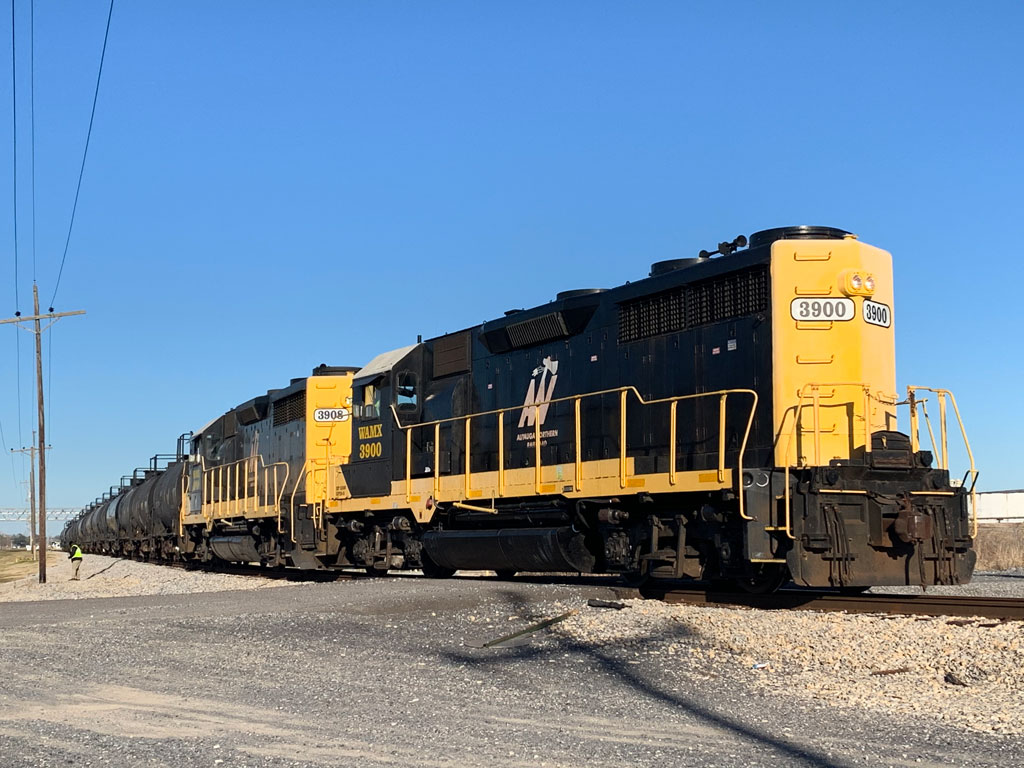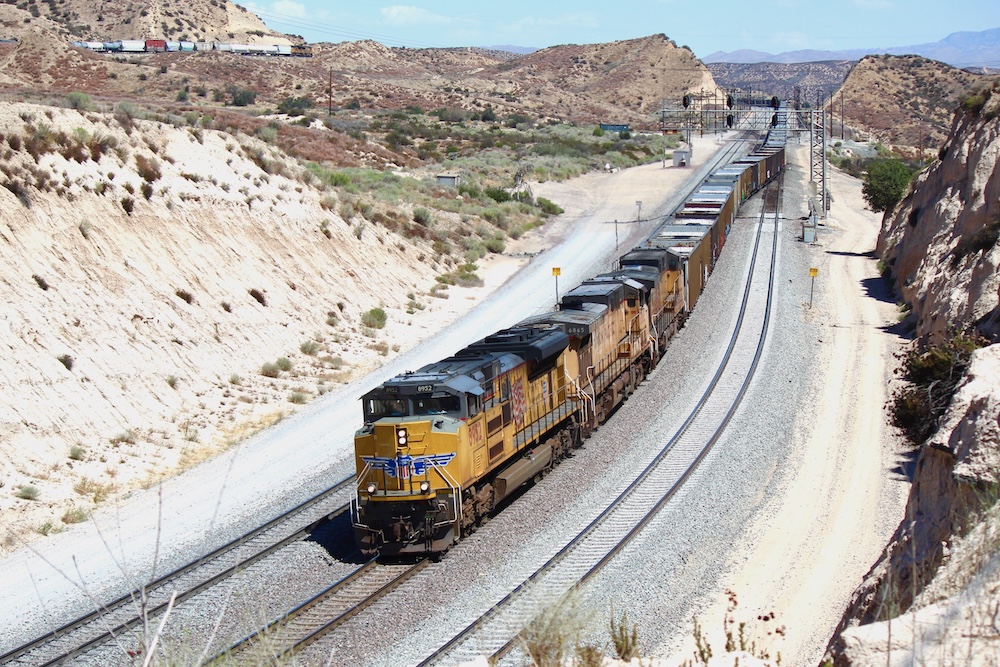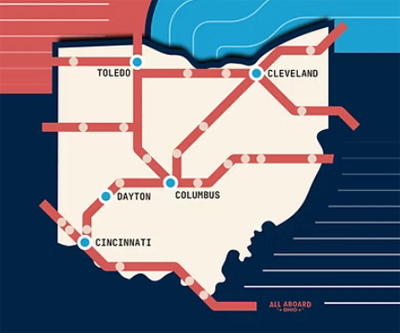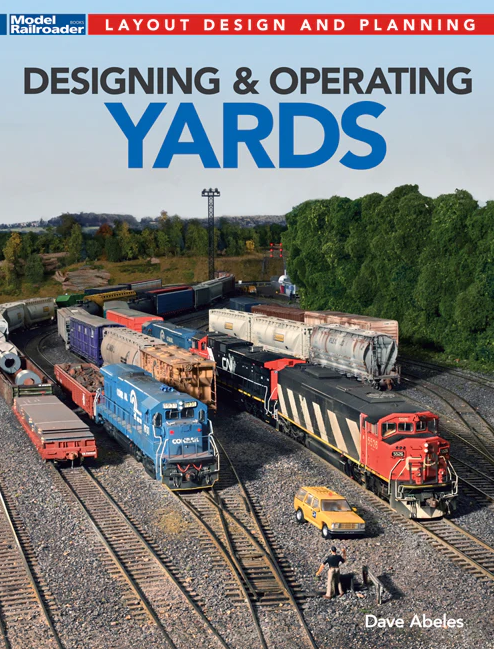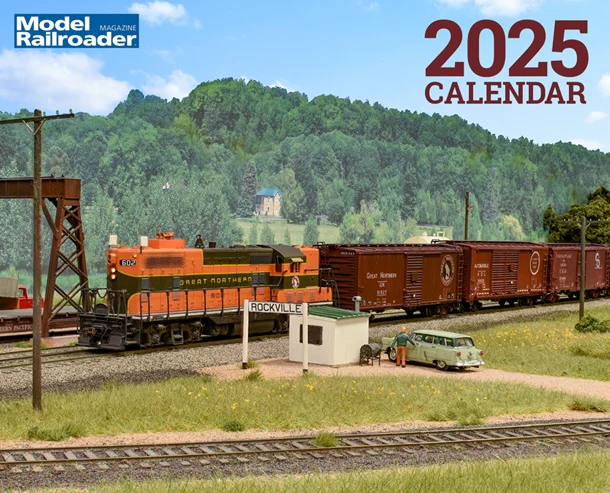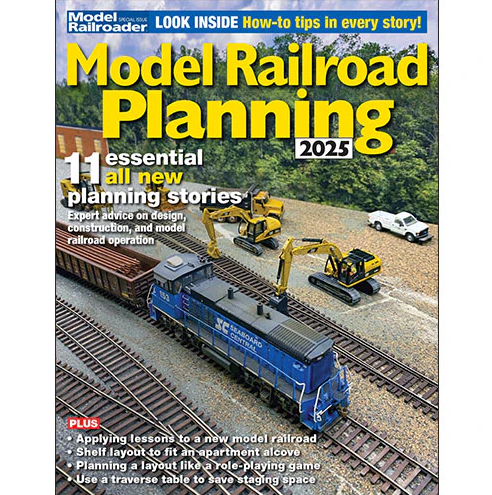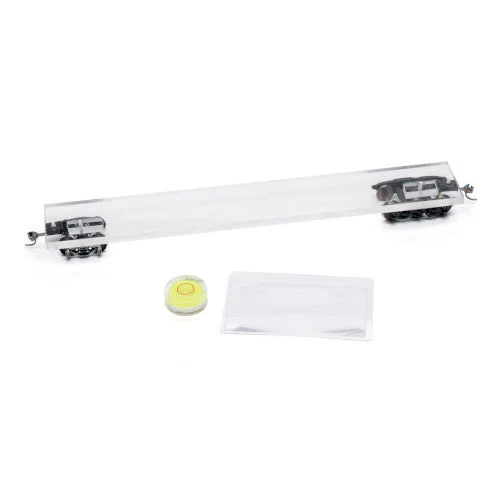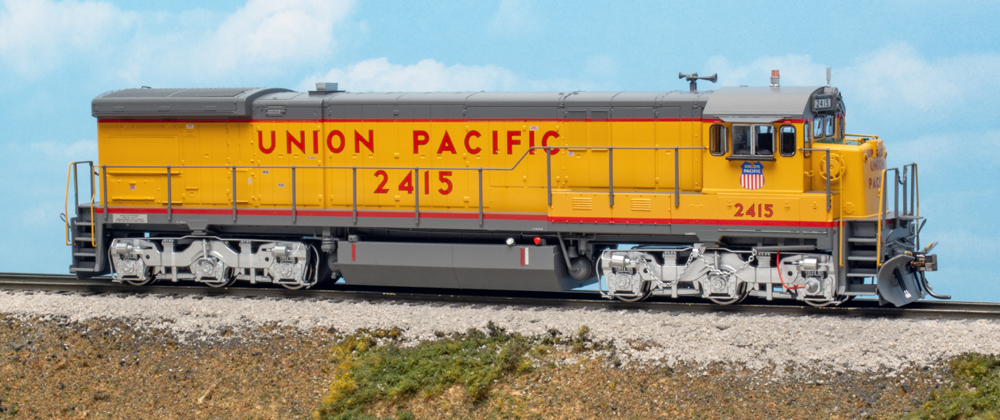
The C30-7 is the latest addition to the lineup of General Electric diesel locomotives from Rapido Trains. The HO scale model, offered in eight paint schemes, has a five-pole motor with dual flywheels; a heavy, die-cast metal weight; and prototype-specific details.
Prototype history
General Electric produced the C30-7 from September 1976 to May 1985. During that time 1,078 units were built. The six-axle road locomotive, rated at 3,000 horsepower, was equipped with a 7FDL16 diesel engine, a GTA-11 alternator, and 752 traction motors.
The sample we received is decorated as Union Pacific 2415, part of the railroad’s 2400 through 2539 series built between July 1977 and October 1980. The 2415 was renumbered 415 on May 16, 1997. Union Pacific retired the C30-7 on Sept. 30, 1999.
Model features
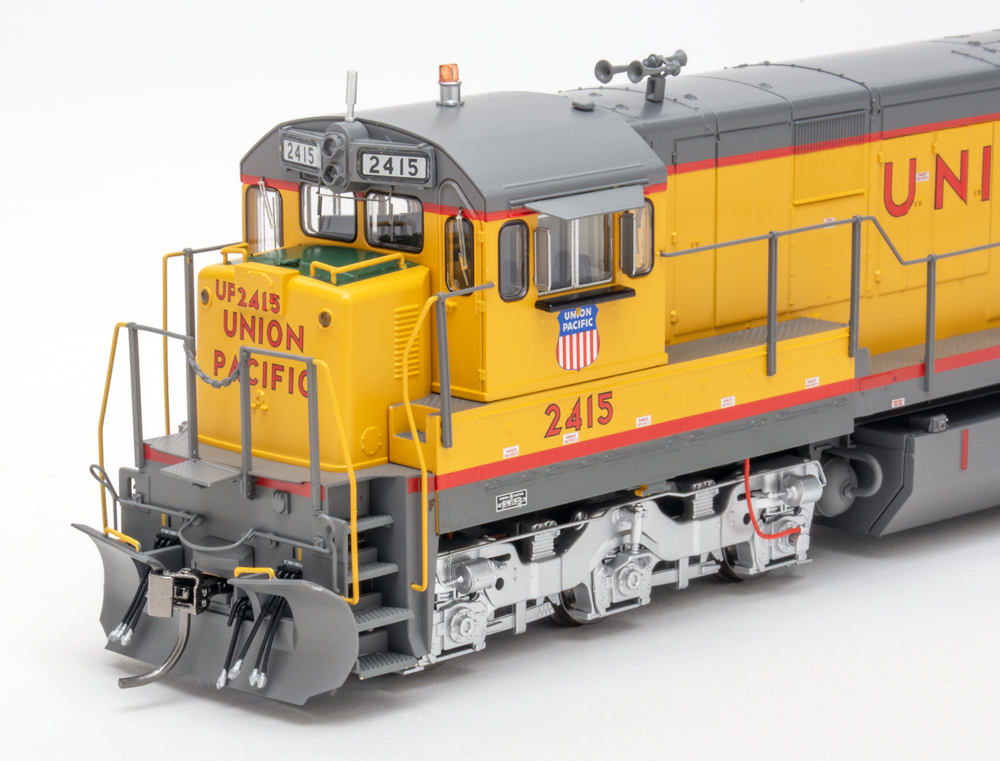
The Rapido C30-7 features a multi-piece injection-molded plastic body consisting of the short hood, cab, long hood, and sill unit. The cab sub-base doors are separate pieces that fit into the sill on both sides.
The UP model has a factory-applied snowplow on the front pilot. Both pilots have factory-applied three hose m.u. clusters and a train line hose, all with the glad hands picked in silver. The uncoupling levers are flexible plastic.
The C30-7’s cab has freestanding windshield wipers, sunshades, and wind deflectors. A firecracker antenna, cab vent, and working beacon are among the rooftop details. The cab interior includes a control console, three seats, and an engine control panel.
A small plastic bag contains modeler-installed etched-metal flags (green and white), an m.u. cable with stand, and an m.u. receptacle with open cover. Extra cab side glazing with the fixed windows painted yellow is also included. The glazing is appropriate for units after Jan. 1, 1980, when the Federal Railroad Administration required railroads to use laminated glass instead of tempered glass in locomotives and cabooses. As a cost-saving measure, many railroads opted to plate over the fixed side windows on locomotives.
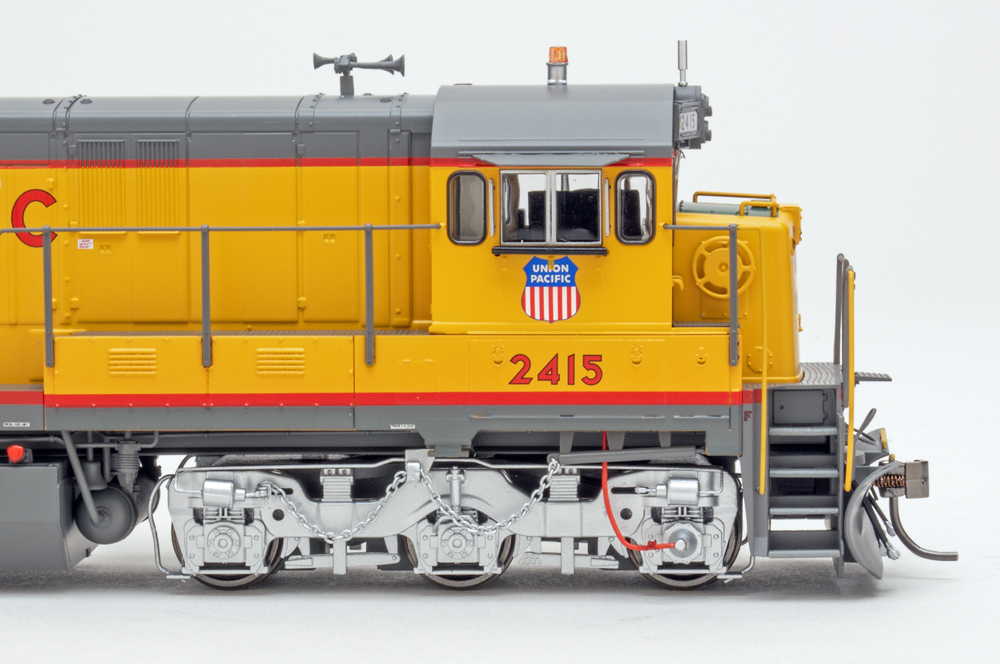
Rapido offers the C30-7 with Adirondack or Rockwell trucks as appropriate; the UP model has the former with high-mount brake cylinders, formed wire truck air lines, and sand lines. Both front trucks have a speed recorder cable picked in red. The lead truck on the engineer’s side has a brake chain running from the cylinder above the rear axle to the chain tube guide. Traction motor casing detail is molded into the bottom of the gear box covers.
Under the shell

To separate the shell from the chassis, I first removed the front and rear draft-gear boxes. Then I took out four screws (two each between the truck and air tank at both ends of the fuel tank). Since there are no wires or details tethered to the shell, it just lifts right off.
The motor and flywheels are centered in the chassis. Much of the interior is filled with weights. A printed-circuit (PC) board, attached with screws, spans the top of the weight that runs from the back of the cab to the rear of the long hood.
The ESU LokSound V5 sound decoder and capacitors for the MoPower temporary energy storage system are located on top of the board. The capacitor-based system allows the locomotive to run over dirty rail and dead spots. Dual, cube-type speakers are located above the rear truck.
Measuring up
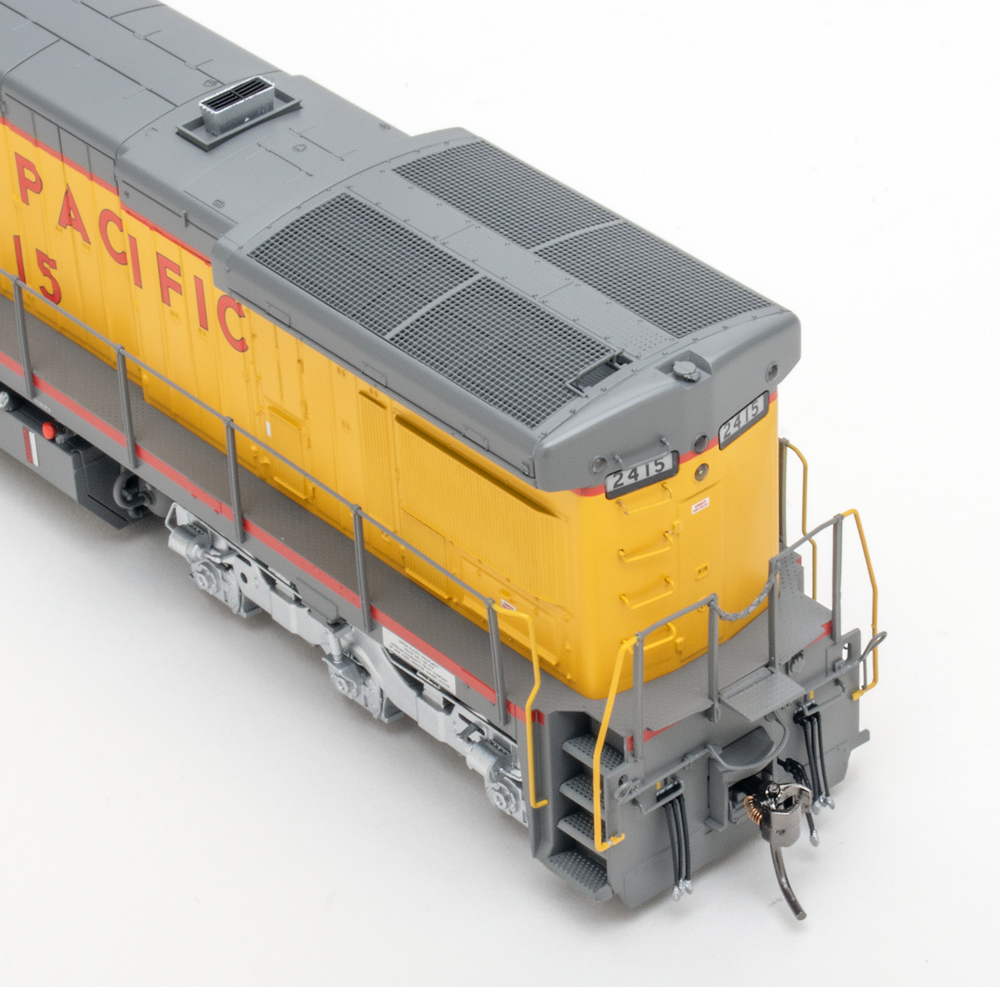
Our sample is decorated in UP’s as-delivered Armour Yellow and Harbor Mist Gray paint scheme. The yellow paint is smooth and evenly applied, and the separation lines between colors are crisp. There are a few small voids where the red stripes pass over louvers and body panels. They would be easy to fix with paint and a fine brush. The printed trust plates, identification and warning labels, and GE name on the builder’s plates are legible under magnification.
Drawings of the C30-7 were published in the September 1999 issue of Model Railroader. The Rapido model matches published dimensions.
The C30-7 we received has an ESU LokSound V5 sound decoder. I first tested the six-axle road locomotive at the workbench with an NCE Power Cab. At step 1 the model moved at 0.7 scale mph. Very impressive! The locomotive achieved a top speed of 64 smph at step 28. The maximum speed on the prototypes ranged from 70 to 93 mph depending on the gear ratio.
For real-world testing, I took the six-axle unit over to our Winston-Salem Southbound. Admittedly, the full-size C30-7 wasn’t designed as a road switcher. However, the Rapido model successfully worked industries on the Tar Branch, navigating a No. 4 turnout and 30-degree crossing without issue.
The full-size C30-7, often found leading unit coal and heavy-haul trains, was the best-selling unit from GE’s Dash 7 lineup. Rapido has faithfully captured the lines of the six-axle unit, from the rounded corners on the short hood to the stepped radiator section near the back of the long hood.
See the Rapido Trains HO GE C30-7 in action in this product review video.
Facts & features
Price: Direct-current model, $239.95; with ESU LokSound V5 sound decoder, $349.95
Manufacturer
Rapido Trains Inc.
500 Alden Rd., Unit 21
Markham, Ontario, Canada
L3R 5H5
Era: June 1978 to late 1980s (as decorated)
Road names: Union Pacific; Atchison, Topeka & Santa Fe; Burlington Northern; Conrail; CSX; National Railways of Mexico; Norfolk & Western; and Norfolk Southern. Four road numbers per scheme.
Features
- Body-mounted metal couplers, at correct height
- Metal wheel stubs mounted on plastic drive gear axles, correctly gauged
- Weight: 1 pound, 3 ounces






